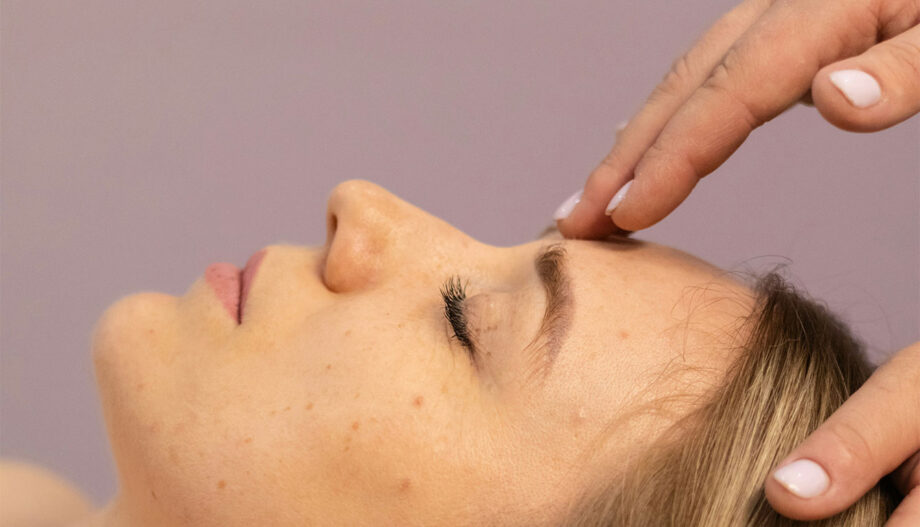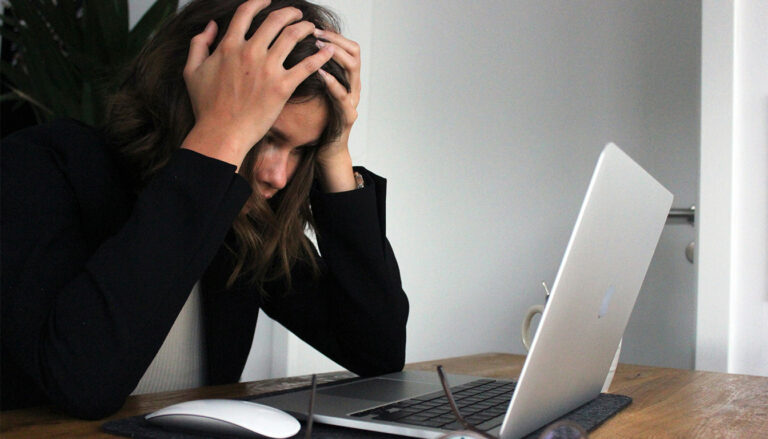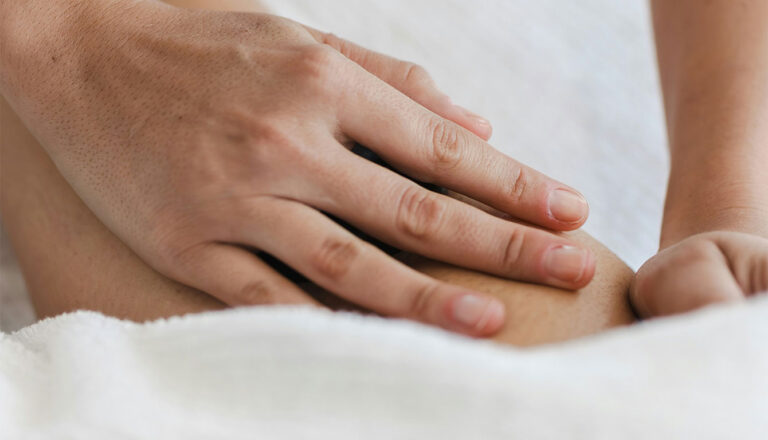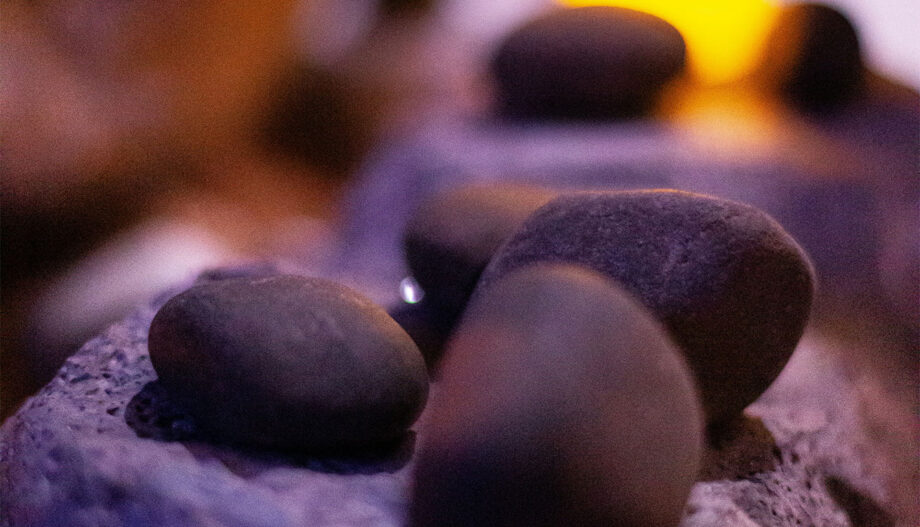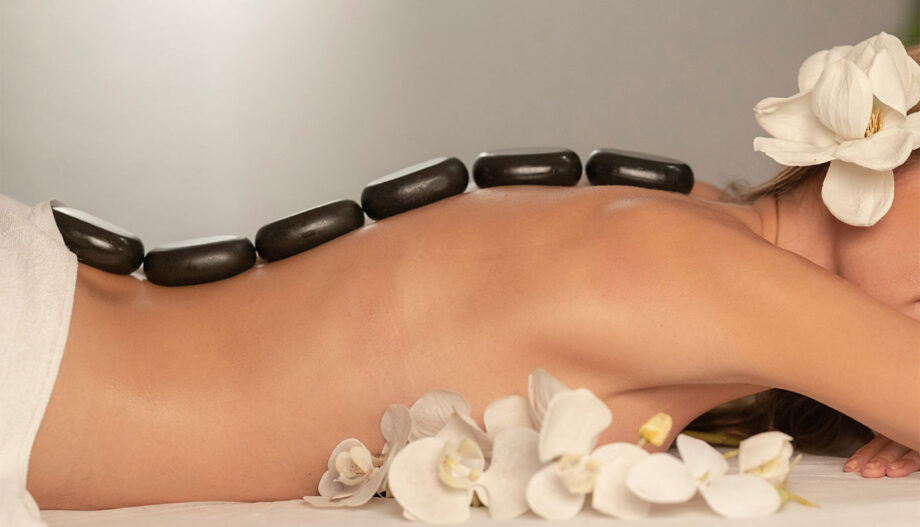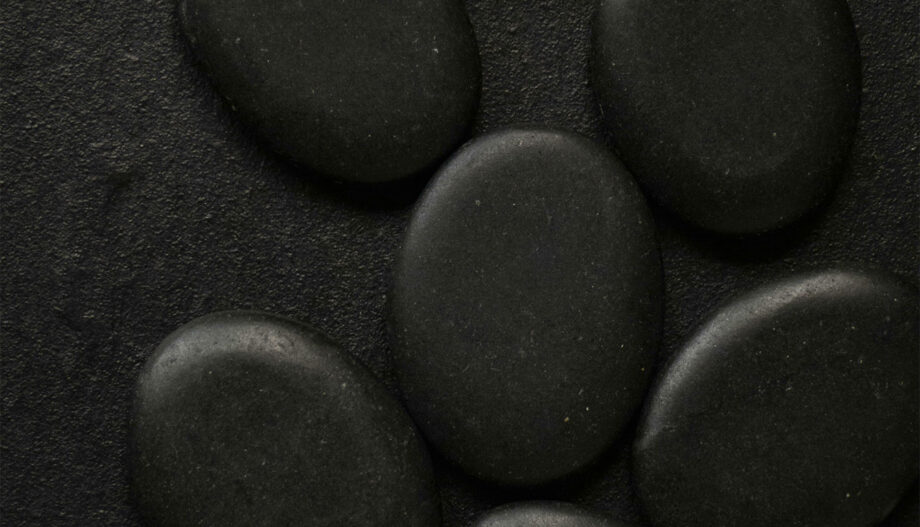Indian head massage is a seated, clothed therapy that targets acupressure points across the scalp, ears, neck and shoulders. Sessions often last 15–30 minutes and can use light oils such as grapeseed or coconut, making this treatment easy to fit into a busy day.
Practitioners link the method to Ayurveda’s idea of the body as an inverted tree, suggesting that working on the head and central nervous system can produce whole‑body effects. Small UK and international studies report faster relaxation, eased tension and fewer headaches after a single visit.
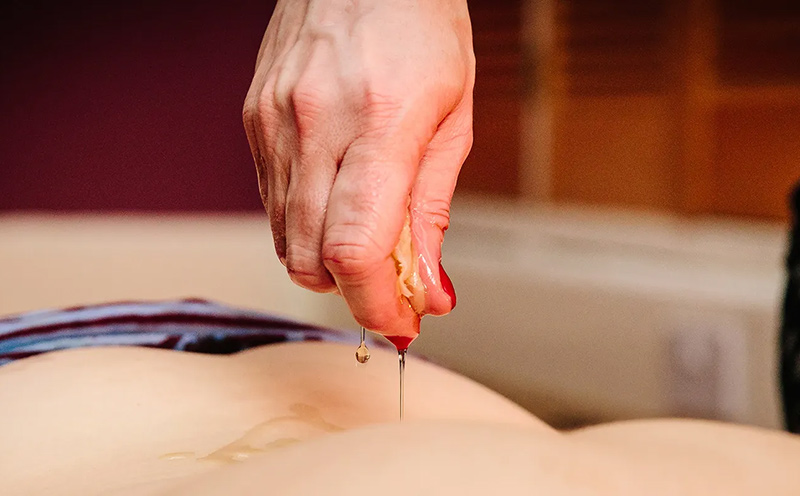
Measured shifts in cortisol, heart rate and blood pressure have been seen in brief routines, and a 10‑week study of office workers showed lasting reductions in cortisol and systolic pressure. Individual responses vary, but many people notice clear short‑term relief.
Practical perks include low cost (30‑minute sessions are often near £30) and wide availability in salons and wellbeing centres. For a concise list of reported advantages and deeper context, see this summary of key findings and benefits.
Read a useful summary of reported that ties tradition to modern research.
Key Takeaways
- Seated, clothed sessions target scalp, neck and shoulders for quick relaxation.
- Short treatments can lower cortisol, heart rate and systolic blood pressure.
- Ayurvedic roots frame why the head is central to wider physical effects.
- Typical 30‑minute appointments are affordable and widely available in the UK.
- Evidence is promising but early; individual outcomes differ.
- Useful for easing tension, improving sleep and reducing chronic headaches for some people.
At a glance: Why Indian head massage is a go-to for stress relief in the UK today
Across salons and wellbeing hubs, a 30‑minute scalp routine is prized for its convenience and fast results. Many people book a seated, clothed session that fits a lunch break and often costs around £30.
Short sessions can lower cortisol and reduce heart rate. A 10‑week workplace study of 34 female office workers found regular scalp massage cut cortisol and lowered blood pressure. Brief routines also boost circulation, which may ease tension and lift mood quickly.
People commonly seek this treatment for tension‑type headaches and occasional migraines. Some regular clients report thicker‑feeling hair over time, though results vary by person.
- Low effort, fast and suitable for busy schedules
- Typical 30 minutes can improve clarity and mood
- Reported physiological changes include lower stress levels and blood pressure
- Accessible in salons, gyms and clinics across the UK
| Feature | Typical result | Session length/cost |
|---|---|---|
| Scalp stimulation | Improved circulation, relaxation | 30 minutes / ~£30 |
| Tension release | Reduced headaches, eased neck tension | Short, seated session |
| Regular treatment | Lower cortisol, possible hair growth benefits | Weekly or fortnightly |
What is an Indian head massage? Origins, techniques and the Ayurvedic link
Champissage began as a domestic ritual and later became a clinic practice in Britain, blending tradition with modern care. The method traces back to Ayurveda (references as early as 600 BC) and reached the UK in the 1970s when Narendra Mehta promoted it at London Olympia.
The Ayurvedic view sees the head and central nervous system as key to whole‑body balance. Working the scalp, neck and shoulders can feel settling for both body and mind.
- Signature techniques include rhythmic strokes, tapping, kneading and gentle stretches across the scalp, neck, shoulders and face.
- Therapists often include brief ear work and facial pressure points to ease sinus tension and soothe the temples.
- Clients are usually seated and fully clothed; practitioners warm their hands and remove jewellery to protect the skin and hair.
Oils are optional: grapeseed offers light glide, sesame adds warmth and coconut gives scalp nourishment. A dry approach suits those who prefer no product. For a concise guide to the tradition and practical notes, see this Indian head massage overview.
How does Indian head massage relieve stress?
A few minutes of steady, gentle work at the base of the skull can prompt the body to slow down and settle. Gentle pressure around the occipital area and temples is linked with parasympathetic activation through vagus nerve pathways, which helps lower heart rate and calm the nervous system.
Switching on the parasympathetic: calming the nervous system
Soothing touch to the scalp and temple area nudges the body out of ‘fight or flight’. People often feel this as slower breathing and a quieter mind. A looser jaw and longer exhales are common signs that the system is shifting towards rest.
Releasing muscular tension in the neck and shoulders to ease the mind
Tight neck and shoulder muscles from desk posture keep the brain on alert. Practitioners blend scalp holds with kneading of the neck and shoulders so the upper body unwinds together, taking pressure off the skull and calming racing thoughts.
Even short scalp massage sequences, delivered with steady pressure and unhurried rhythm, can produce fast, tangible relief. Responses vary, but many clients report a lighter head, softer shoulders and a clearer outlook after a brief session.
To read a concise list of reported advantages and research summaries, see this summary of advantages.
The science: hormones, blood flow and headache relief
Research links brief scalp routines with lower cortisol and clearer cardiovascular markers. A 10‑week workplace programme with 34 female office workers showed significant falls in cortisol and reduced systolic blood pressure after regular scalp work.
Cortisol and blood pressure: what studies on scalp massage show
Short 15‑minute sessions have been tied to cortisol drops (for example, 23.4 to 16.3 µg/dl) and lower heart rate (80.1 to 73.3 bpm).
A comparison found lower systolic blood pressure in treated groups (139.8 mmHg) versus controls (147.4 mmHg). These shifts can make people feel calmer and more focused.
Improved circulation and lymphatic flow: why better blood flow matters
Improved blood circulation dilates capillaries and helps deliver oxygen and nutrients to the scalp and neck.
Work from the Buck Institute and UIC links enhanced flow to reduced inflammation and faster recovery after exertion.
Migraines and tension headaches: evidence for short-term relief
The University of Granada reported that a single 30‑minute session eased chronic tension headaches within 24 hours for many participants.
Early evidence suggests combined scalp and neck work can reduce migraine frequency or intensity for some people, though responses vary. Track symptoms and seek medical advice if you have specific conditions.
| Measure | Reported change | Source / note |
|---|---|---|
| Cortisol | Down (e.g. 23.4 → 16.3 µg/dl) | Short session studies |
| Heart rate | Decreased (80.1 → 73.3 bpm) | 15‑minute trials |
| Systolic blood pressure | Lower in therapy group (139.8 vs 147.4 mmHg) | 10‑week workplace study |
| Headache relief | Improved within 24 hours for many | University of Granada, 30‑minute session |
Beyond stress: broader health benefits you may notice
Beyond instant calm, repeated scalp work can boost sleep quality, support hair health and ease daily aches. Practitioners and small studies report better sleep and drops in anxiety symptoms after routine sessions. Many clients say they fall asleep faster and wake less often when sessions form part of a weekly plan.
Better sleep and lower anxiety symptoms
Post-session calm often carries into the night. Pairing short breathing exercises with regular treatment seems to reduce daytime anxious feelings and helps some people break loops of restless thought.
Scalp and hair health
Scalp stimulation increases circulation and nutrient flow to hair follicles. After weeks of consistent work some notice thicker-feeling hair. Occasional, brief shedding can happen early on; this usually settles with continued care and gentle, non-irritating products.
Neck, back and shoulder comfort
Targeted work to the upper back and trapezius eases referred pressure into the head. This can ease concentration and make screen time more manageable. Mild post-session soreness may occur but normally passes within a day with water and light movement. Short daily stretches help prolong the benefits between appointments.
| Benefit area | Likely effect | Practical tip |
|---|---|---|
| Sleep & anxiety | Faster sleep onset; fewer night awakenings | Combine weekly sessions with breathing practice |
| Scalp & hair | Improved circulation; possible stronger-feeling strands | Use gentle oils and avoid harsh products |
| Neck, back & shoulders | Reduced desk-related tension; less referred head pressure | Do short daily neck and shoulder stretches |
What to expect in a UK session: time, setup, and how it feels
A typical UK appointment is short, practical and designed to slot into a busy day. Most sessions last about 30 minutes and commonly cost near £30. Clients sit fully clothed while the therapist works across the shoulders, neck, scalp and face.
Before work begins, you’ll have a quick chat about goals and any areas of concern. The therapist then positions you comfortably and starts with slow, rhythmic strokes to warm muscles and ease tension.
What the treatment feels like
Expect firm yet comfortable pressure, soothing temple strokes and gradual loosening around the base of the skull. Many people report a distinct “switching off” moment as breathing slows and thoughts quiet.
- Oils are optional; a light application keeps hair manageable and towels protect clothing.
- Physiological responses often include lower heart rate and an immediate sense of calm during and after the session.
- Plan to arrive a few minutes early, silence your phone and allow a calm few minutes afterwards rather than rushing back to work.
After the appointment, most clients feel clearer and more grounded. A short drink of water and a gentle neck roll help extend the relaxed state. If you’re going home, some light sleepiness is normal and often welcome.
| Aspect | Typical detail | Practical tip |
|---|---|---|
| Time & cost | 30 minutes / ~£30 | Book a slot that avoids immediate busy meetings |
| Setup | Seated, fully clothed; towels available | Wear comfortable clothing |
| Sensation | Firm, rhythmic strokes; temple soothing | Tell the therapist about preferred pressure |
| After-effects | Calm, clearer thinking; occasional sleepiness | Drink water and do a gentle neck roll |
For a concise list of research and wider benefits, see a short summary of scalp and head therapy benefits.
Is a head massage safe? Contraindications, risks and when to wait
Short, seated scalp therapy is safe for many people, but a few medical conditions mean you should pause or seek GP advice first. A clear consultation and honest answers protect your health and improve outcomes.
Who should avoid or seek GP advice
Pause and consult if you have recent whiplash, a head injury, active cancer treatment without clearance, high blood pressure, epilepsy, diabetes, thrombosis, or open cuts on the scalp. Pregnant clients should use a prenatal‑trained practitioner and avoid sessions in the first trimester unless a clinician approves.
Possible short-term effects and how to reduce them
Some people feel a transient headache, muscle soreness, light‑headedness or mild skin irritation after treatment. These effects often pass within hours.
- Use lighter pressure and ask the therapist to slow the rhythm.
- Hydrate, rise slowly from the chair and rest if dizzy.
- Patch test oils or request a dry session for sensitive skin.
Choosing a qualified practitioner in the UK
Check professional registers such as FHT or CNHC, or listings from the London Centre of Indian Champissage. Look for current insurance, up‑to‑date training and clear client consent procedures.
“Always complete a consultation form and mention new medications — small details help therapists adapt pressure and technique.”
| Risk area | Why caution is needed | Practical step |
|---|---|---|
| High blood pressure | Firm pressure may alter blood pressure or cause dizziness | Get GP approval; therapist adapts pressure |
| Clotting / thrombosis | Manual work could mobilise clots | Avoid treatment until cleared by a clinician |
| Epilepsy | Sensory input may trigger seizures in some people | Seek medical advice and inform the therapist |
| Pregnancy | Certain points and positions need adapting | Use a prenatal‑trained therapist; avoid early weeks unless cleared |
Try it yourself: simple at-home head massage for everyday stress relief
Set aside a few quiet minutes and a comfortable chair. This short routine mirrors clinic moves and fits into a lunch break or evening unwind. You need only your fingertips, an optional light oil and a steady pace.
Set the scene: calm environment, comfortable seating, a few quiet minutes
Dim the lights, silence notifications and sit upright in a supportive chair. Let the shoulders drop and check room humidity is comfortable (40–60%) for best relaxation.
Step‑by‑step: warm‑up, temple circles, scalp sectioning and gentle kneading
- Warm up for three minutes with slow shoulder shrugs and gentle neck turns.
- Use circular motions on the temples for 30–60 seconds to cue calm breathing.
- Divide the scalp into quadrants. Knead each area with steady fingertip pressure, then finish with light tapping to boost circulation and flow.
Enhancers: light oils, gentle tools and mindful breathing
Use a tiny amount of a light oil or keep the session dry. For sensitive skin dilute peppermint to ~1% or choose silicone tools for fine hair and soft bristles for thicker hair.
Short, regular routines—just four minutes a day—may support hair follicle health and feeling calmer over weeks. Stop and seek advice if any symptoms persist or worsen.
“Start slowly and use long exhales to deepen the effect.”
Conclusion
Overall, a short, seated treatment offers a time-smart route to clearer thinking, looser shoulders and measurable physiological change.
Evidence shows brief scalp work can lower cortisol, reduce heart rate and alter blood pressure, so the effects are more than anecdote for many people.
Practical plan: try an introductory 30‑minute appointment with a qualified practitioner and add short, gentle home routines between visits to build lasting benefits.
Make safety a priority: if you have specific health issues or are pregnant, seek personalised advice and choose a therapist listed with recognised UK bodies such as FHT or CNHC.
Whether you want clearer thinking, improved sleep or support for hair growth, this simple therapy is a low‑effort option to boost wellbeing in little time.
FAQ
What are the main benefits of an Indian head massage for stress and wellbeing?
A session calms the nervous system, soothes neck and shoulder tension, and can lower cortisol and blood pressure temporarily. Many clients report better sleep, reduced anxiety symptoms and a clearer mind after a short treatment. It also improves scalp circulation, which may support hair and scalp health.
Where does this therapy originate and how did it reach the UK?
The treatment traces back to the traditional Indian champi practice and Ayurvedic medicine. It arrived in the UK through practitioners and therapists who adapted techniques for clinical and salon settings, blending acupressure, kneading and scalp work for modern clients.
What techniques are used during a typical session?
Therapists use acupressure points, circular temple movements, scalp sectioning, gentle kneading of the neck and shoulders, and ear work. Sessions often combine rhythmic motions and short holds to stimulate circulation and release muscular tension.
Are oils used, and which ones are best?
Oils are optional. When used, common choices include grapeseed, sesame and coconut. Lighter oils suit sensitive scalps; sesame offers deeper warmth. Therapists recommend patch-testing to avoid irritation and choose oils based on skin type and scent preference.
How exactly does this treatment affect the nervous system?
Gentle pressure and rhythmic touch stimulate the parasympathetic response, promoting relaxation and lowering arousal levels. That switch helps reduce stress hormones, slows breathing and encourages a sense of calm across body and mind.
Can it help with headaches and migraines?
Many people experience short-term relief from tension headaches and milder migraines after treatment. Improved circulation and eased muscle tightness around the neck and base of the skull can lessen pain intensity, though results vary and chronic migraine sufferers should seek medical advice.
Is there scientific evidence for hormone and circulation changes?
Small studies and clinical reports show reductions in cortisol and modest improvements in blood pressure and scalp blood flow following scalp massage. While evidence supports short-term benefits, more large-scale research is needed for definitive claims.
What extra health benefits might I notice beyond stress relief?
Regular sessions can improve sleep quality, reduce general muscular tension in the neck, back and shoulders, and support scalp condition. Some people notice shinier hair or less dandruff due to improved circulation and oil distribution.
How long does a typical UK session last and what should I expect?
Sessions are often around 30 minutes and usually performed seated and fully clothed. Expect focused work on the scalp, neck and shoulders; therapists may finish with gentle head cradling and breathing guidance to enhance relaxation.
Is this treatment safe and who should take care?
It is safe for most people, but those with uncontrolled high blood pressure, epilepsy, recent head injury, certain skin conditions, or who are pregnant should consult their GP or a qualified therapist first. Always disclose medical history before a session.
What short-term side effects might occur?
Some clients report mild dizziness, temporary headaches, muscle soreness or skin sensitivity after a session. These effects usually resolve within 24–48 hours. Drinking water and resting can help recovery.
How do I choose a qualified therapist in the UK?
Look for practitioners with recognised vocational training, membership of reputable therapy associations, and clear client reviews. Salons and clinics should provide treatment information, insurance details and a consultation before starting.
Can I try a simple head routine at home?
Yes. Create a calm space, sit comfortably, warm your hands and use gentle circular movements on the temples, slow scalp sectioning with fingertip kneading, and light neck strokes. Use a small amount of suitable oil if desired and follow mindful breathing.
How often should I have sessions to notice benefits?
Frequency depends on need. A weekly session can offer strong stress reduction and cumulative relief; fortnightly or monthly treatments help maintain results. At-home routines between appointments boost benefits.
Will regular treatment improve hair growth?
Scalp stimulation enhances blood supply and may support hair follicle health, which can encourage stronger hair growth for some people. It is not a guaranteed cure for hair loss, and underlying medical causes should be checked by a clinician.
